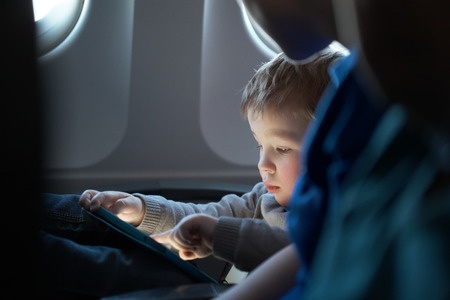New Study: In-flight Risks to Infants
November 17, 2014 | Category: Child Injuries | ShareOften when travelling by air the pilot, co-pilot or attendant makes the announcement that there is the potential of air turbulence. During the announcement specific instructions are given about remaining seated with seat belts fastened. However, there is no mention of the potential in-flight risks to infants in the laps of parents or guardians.
The Wall Street Journal reported in August 2014 that, "Safety investigators are raising warnings about in-flight turbulence, which is the leading cause of injury to children on airplanes and can sometimes catapult lap children into another row."
A study released in July 2014 conducted by Rainbow Babies and Children's Hospital in Cleveland, Ohio, and published in the Pediatric Critical Care Medicine journal analyzed in-flight pediatric deaths. The study involved looking at the data of seventy-four airlines. The data had been collected by MedAire, which handled about 29 thousand in-flight emergencies in 2013. MedAire is the largest medical-service firm supporting the airlines, as reported by The Wall Street Journal. The study covered a 2 1/2 year period through June of 2013 during which time MedAire handled 81,104 in-flight emergencies; 7,573 or 9.3% involved children.
 One of the researchers in the Rainbow Babies and Children's Hospital study and global medical director for aviation health at MedAire Inc., Paulo Alves said, "Children are more protected if they are closer to the window seat."
One of the researchers in the Rainbow Babies and Children's Hospital study and global medical director for aviation health at MedAire Inc., Paulo Alves said, "Children are more protected if they are closer to the window seat."
The Federal Aviation Administration (FAA) recommends, although does not require, that parents purchase a separate seat for children and use car seats to protect them.
ABC News reported that in February 2014 a baby was, "...flung from its mother's arms and five people were sent to hospitals from injuries they suffered when a United Airlines flight hit severe turbulence over Montana." The report went on to say that turbulence can happen even when there are clear weather conditions.
Forbes magazine in an article dated July 2014 offered the following tips for ensuring children are able to fly safely in their own seats:
- Always purchase a seat (window seat so that the aisle isn’t blocked) for your child, regardless of age; it’s just not safe to fly with a lap child.
- If you fly internationally, be aware that FAA rules will only apply to US certificated airlines, not foreign airlines even if operated under code-share agreements with US airlines.
- Ensure that the child restraint system you bring on board is specifically approved for aircraft use and is clearly labeled. You will not be allowed to use an unlabeled restraint system, whether car seat or harness.
- Make sure the restraint system is appropriate for the weight of your child.
- Learn how to properly secure the restraint system before going to the airport. The FAA has several helpful videos on its webpage.
- Bring a copy of the FAA’s webpage and information for operators which states the FAA requirement that airlines cannot prohibit use of approved child restraint systems if a seat has been purchased for the child.
- Bring a copy of the airline’s webpage, if any, regarding child restraint system use.
- Notify the gate agent that you will be using an approved child restraint system in a seat you purchased and ask for assistance in ensuring the crew’s familiarity with federal requirements. Be prepared to demonstrate that the restraint is FAA-approved and to educate the agent on federal requirements. It’s better to keep everyone informed during the boarding process so any issues can be resolved early.
- Request pre-boarding or early boarding so you have plenty of time to properly secure the restraint system.
"As we enter this busy holiday travel season, with many travelling by air with children, it is important to know how to protect children from possible injury due to air turbulence. We urge parents to review this blog for safety tips when planning to book airline flights," says Child Injury Protection Attorney, Randall Spivey of Spivey Law Firm, Personal Injury Attorneys, P.A.
Child Injury Attorney Randall Spivey is a Board Certified Trial Attorney – the highest recognition for competence bestowed by the Florida Bar and a distinction earned by just one (1%) percent of Florida attorneys. He has handled over 2,000 personal injury and wrongful death cases throughout Florida. For a free and confidential consultation to discuss your legal rights, contact the Spivey Law Firm, Personal Injury Attorneys, P.A., in Lee County at 239.337.7483 or toll free at 1.888.477.4839,or by email to Randall@SpiveyLaw.com. Visit SpiveyLaw.com for more information. You can contact Spivey Law Firm, Personal Injury Attorneys, P.A.in Charlotte County at 941.764.7748 and in Collier County 239.793.7748.

